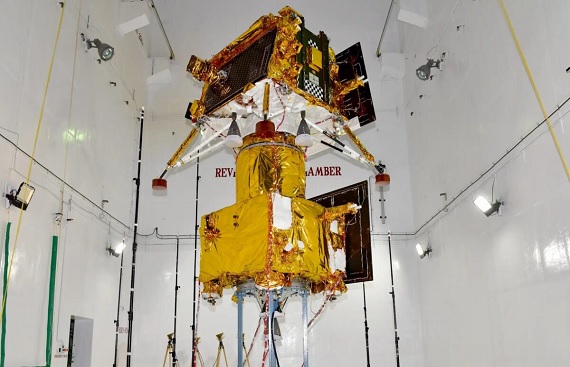ISRO Successfully Retrieves Chandrayaan-3 Propulsion Module into Earth's Orbit
By
siliconindia | Tuesday, 05 December 2023, 02:43:49 PM IST

The Indian Space Research Organisation (ISRO) announced a "unique experiment," stating that the Propulsion Module of Chandrayaan-3 has been transitioned from a lunar orbit to an orbit around Earth. "In another unique experiment, like the hop experiment on the Vikram Lander, the Propulsion Module of Chandrayaan-3 was moved from an orbit around the Moon to an orbit around the Earth", said Isro's statement.
Chandryaan-3's Vikram Lander made a historic touchdown on the Moon's South Pole on August 23, over a month after the spacecraft was launched. Pointing out the primary responsibility of the mission, Isro said, "The primary objective of the Chandrayaan-3 mission was to demonstrate a soft landing near the lunar South Pole region and perform experiments using the instruments on Vikram and Pragyaan. The instruments in Lander and Rover were operated continuously for one lunar day as per the defined mission life. The mission objectives of Chandrayaan-3 have been completely met".
The primary objective of the Propulsion Module was to transport the lander module from the Geostationary Transfer Orbit (GTO) to the final lunar polar circular orbit and facilitate the separation of the lander, according to the space agency. Following the separation, the Spectro-polarimetry of the Habitable Planet Earth (SHAPE) payload within the Propulsion Module was also activated. The original plan was to operate this payload for approximately three months throughout the module's mission life. Due to precise orbit injection by LVM3 and optimal earth or lunar burn manoeuvres, the Propulsion Module had over 100 kg of fuel available after more than one month of operations in lunar orbit, the statement said.
ISRO announced that a decision was made to utilize the remaining fuel in the Propulsion Module (PM) to gather extra data for upcoming lunar missions and showcase mission operation strategies for a sample return mission. To sustain the operation of the SHAPE payload for earth observation, it was determined to reposition the PM into a suitable earth orbit. The mission plan was carefully devised to ensure collision avoidance, preventing the PM from impacting the Moon's surface or entering Earth's Geosynchronous Equatorial Orbit (GEO) belt at 36,000 km and orbits below that, as outlined in the statement.
Taking into account the anticipated fuel availability and the safety of the GEO spacecraft, a favorable earth return trajectory was planned for October 2023. The initial maneuver on October 9, 2023, aimed to elevate the apolune altitude from 150 km to 5,112 km, effectively extending the orbital period from 2.1 hours to 7.2 hours. Subsequently, based on the estimated propellant availability, the plan for the second maneuver was adjusted to achieve an Earth orbit ranging from 1.8 lakh x 3.8 lakh km.
The Trans-Earthinjection (TEI) maneuver was performed on October 13, 2023. In the post-TEI manoeuvre realized orbit, the PM made four Moon fly-bys before departing the sphere of influence (SOI) of the Moon on November 10. Currently, the PM is orbiting Earth and crossed its first perigee on November 22 with an altitude of 1.54 lakh km. The orbit period is nearly 13 days with a 27-degree inclination. The perigee and apogee altitude vary during its trajectory and the predicted minimum perigee altitude is 1.15 lakh km, Isro said. "Hence, as per current orbit prediction, there is no threat of close approach with any operational Earth-orbiting satellites", it said.
As per the plan, the SHAPE payload is operated whenever Earth is in its field of view. Also, a special operation of the SHAPE payload was carried out on October 28, 2023, during a solar eclipse. The SHAPE payload operations will continue further, the statement added. "UR Rao Satellite Centre/ISRO’s flight dynamics team has developed an analysis tool from first principles for this operation which is being validated through the return manoeuvres carried out on the Chandrayaan-3 PM", Isro said.
As per ISRO, the key results of the return maneuvers conducted on the Propulsion Module (PM) for future missions include the formulation and execution of trajectories and maneuvers for the return journey from the Moon to Earth; the creation of a software module to plan and preliminarily validate such maneuvers; the planning and execution of a gravity-assisted fly-by around a planet or celestial body; and the prevention of uncontrolled crashes of the PM onto the Moon's surface at the end of its operational life, thereby meeting the criteria of debris-free conclusion.
Read More News :
Driver Logistics launches Karnataka operations to Invest 525 Crores



.jpg)